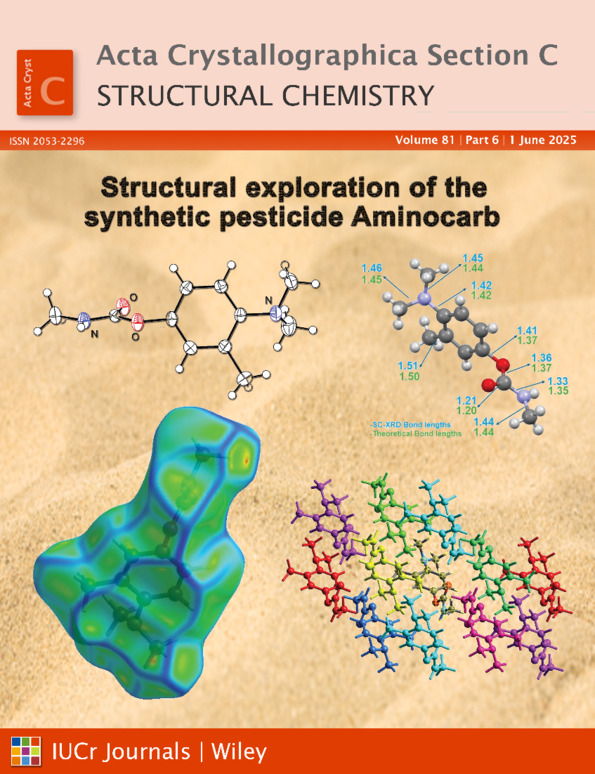Synthesis and crystal structure of (E)-3-tert-butyl-N-[(2-nitrophenyl)methylidene]-1-phenyl-1H-pyrazol-5-amine: a coplanar Schiff base with enhanced π-stacking interactions
Abstract
The pyrazole-based Schiff base (E)-3-tert-butyl-N-[(2-nitrophenyl)methylidene]-1-phenyl-1H-pyrazol-5-amine, C20H20N4O2, was synthesized in a straightforward manner via a solventless maceration technique, and its structure elucidated through spectroscopic characterization and single-crystal X-ray diffraction analysis. The compound exhibits a degree of coplanarity, influenced by the ortho-nitro group on a phenyl ring. Crystal structure analysis, complemented by Hirshfeld surface analysis and QTAIM-C calculations, reveals that the crystal packing is mainly stabilized by a network of π-stacking and dispersion interactions. Notably, H…C π-stacking interactions, particularly those between ortho- and para-C—H atoms of phenyl groups, play a significant role in the packing motif. The Hirshfeld surface also reveals a 5.8% contribution from H…N contacts, involving aliphatic H atoms interacting with a pyrazole N atom. CE-B3LYP calculations highlight the dominance of dispersion forces in the crystal, with the strongest interaction energy calculated to be −58.9 kJ mol−1 between the central molecule and the molecular pair related by the identity symmetry operation (x, y, z). These findings provide insights into the structure–property relationships of this compound and contribute to understanding crystal engineering principles for designing new materials.




